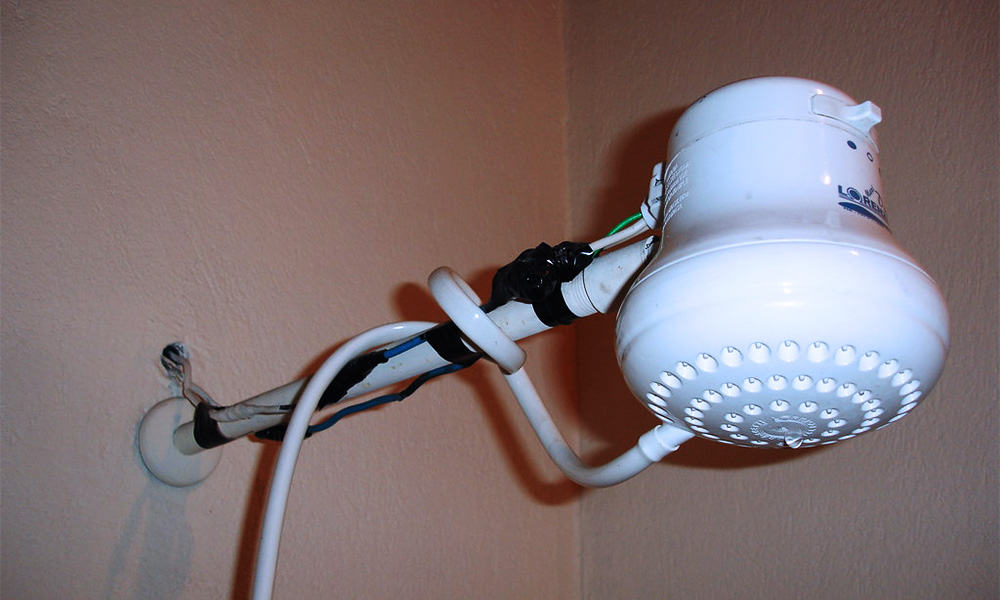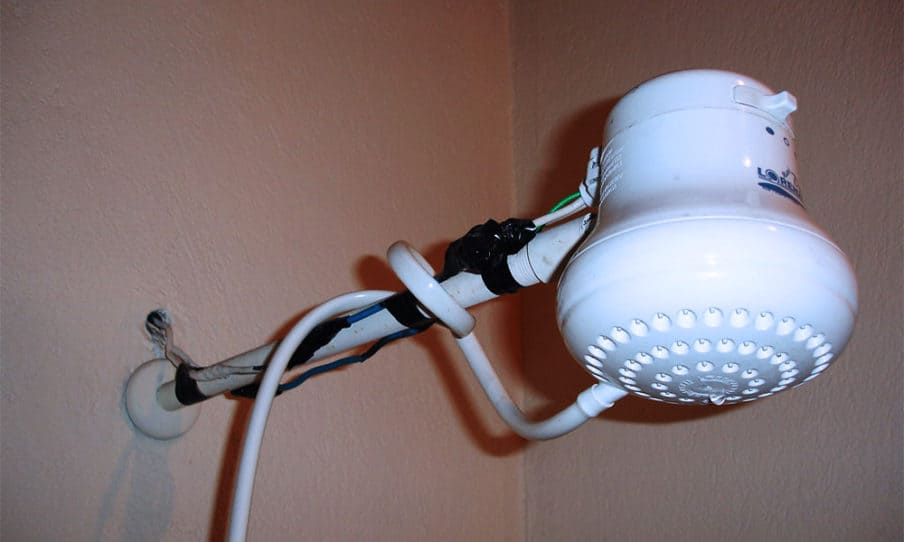
If you’ve ever stayed in a traditional Tico home or a budget-friendly hotel in Costa Rica, chances are you’ve encountered a shock shower. Known locally as duchas eléctricas, these quirky electric showerheads are a staple in many households across the country.
For first-time visitors, they can be a bit of an eyebrow-raiser—exposed wires, a faint hum of electricity, and water all in one place? It’s the stuff of traveler lore! But don’t worry, there’s more to these contraptions than meets the eye. Let’s look into what makes shock showers a unique part of Costa Rican life, how they work, and how to use them without getting, well, shocked.
What Exactly Is a Electric Shower?
An electric shower is an on-demand water heater built right into the showerhead. Unlike the massive hot water tanks you might be used to in other countries, these compact devices heat water as it flows through, using electric coils. Turn on the faucet, and voilà—hot water streams out almost instantly. The catch? The heating element is powered by electricity, and the wiring is often visible, sometimes wrapped in electrical tape or dangling a little too close for comfort. It’s this bare-bones setup that earns them their nickname and gives newcomers a jolt of nerves (pun intended).
In Costa Rica, where electricity is pricey (think 22 cents per kWh compared to much lower rates in places like the U.S.), heating a big tank of water isn’t practical for most families. Plus, with no natural gas lines crisscrossing the country and small propane tanks reserved mainly for cooking, the shock shower is a thrifty, ingenious solution. It’s sustainability meets Tico resourcefulness—hot water when you need it, no excess energy wasted.
Why Are They So Common?
Electric showers are everywhere in Costa Rica, from rural cabins to beachside surf hostels. They reflect the laid-back, practical vibe of the culture. Ticos have been using them for decades, and they’re unfazed by the DIY look that might make a tourist double-take. It’s not just about cost—although that’s a big factor. It’s also about simplicity. Why install a complex plumbing system when a $20 showerhead can do the trick? They’re so ingrained in daily life that many Costa Ricans grow up mastering the art of showering with them from childhood.
That said, you won’t find them in every spot. Newer homes and upscale resorts often have modern water heaters, especially in tourist-heavy areas like Manuel Antonio or Tamarindo. But for an authentic Pura Vida experience, a shock shower is practically a rite of passage.
Are They Safe? (Spoiler: Yes, If You’re Smart)
Let’s address the elephant in the room: the safety question. At first glance, a electric shower looks like an accident waiting to happen—electricity and water don’t exactly scream “best friends.” But here’s the thing: when installed and used correctly, they’re surprisingly safe. Locals swear by them, and serious incidents are rare. The key is proper wiring and a little common sense.
That doesn’t mean they’re foolproof. Poor installations—think frayed wires or sketchy connections—can deliver a mild zap, especially if you touch the showerhead while it’s on. It’s not usually dangerous, just startling. Think of it like a static shock, not a lightning bolt. Still, it’s enough to make your shower a quick one!
How to Use a Electric Shower Like a Pro
Ready to brave your first electric shower? Here’s a step-by-step guide to keep it smooth and shock-free:
- Check the Setup: Before you even turn on the water, eyeball the wiring. Look for loose connections or exposed bits. If it looks like a science experiment gone wrong, maybe opt for a cold rinse instead.
- Start with the Water: Turn on the faucet first, then adjust the temperature (if there’s a switch—some models have settings like “hot,” “warm,” or “off”). This keeps the heating element from frying.
- Keep Your Hands Off: Once it’s running, avoid touching the showerhead or any wires. Wet hands and electricity? Not a great combo.
- Test the Temp: The water heats up fast, but there’s no thermostat. Lower water pressure usually means hotter water, so tweak the flow to find your sweet spot.
- Turn Off Before You Exit: Switch off the water (and the power, if there’s a separate breaker) before stepping out. Safety first!
Pro tip: Keep your flip-flops on if the floor’s wet, and don’t hang your towel over the showerhead. You’ll thank me later.
A Cultural Quirk Worth Embracing
Electric showers might seem odd to outsiders, but they’re a perfect snapshot of Costa Rican ingenuity—practical, affordable, and a little rough around the edges. Locals even joke about them, a nod to their love of gallows humor. For travelers, they’re a story to tell back home: “I showered under live wires and lived to tell the tale!”
So, next time you’re in Costa Rica and spot one of these contraptions, don’t shy away. Embrace the adventure. With a little caution, you’ll step out refreshed, warmed up, and maybe even a bit more Tico at heart. Pura Vida, indeed!

